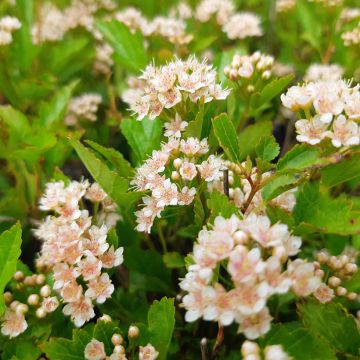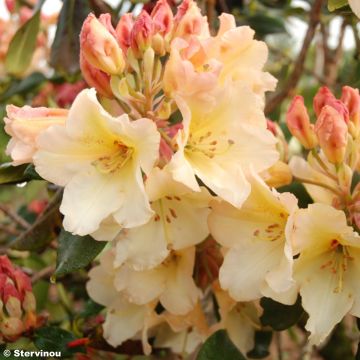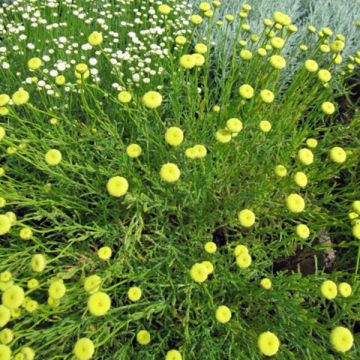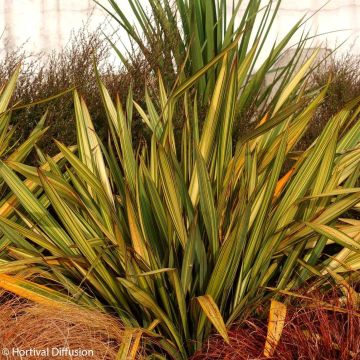

Daphniphyllum himalayense subsp. macropodum


Daphniphyllum himalayense subsp. macropodum
Daphniphyllum himalayense subsp. macropodum
Daphniphyllum himalayense subsp. macropodum
The young plant seems to be thriving. I bought it in autumn and planted it in a large pot, then placed it in a sheltered corner to protect it from the cold until spring. Since it has been planted in the ground, it has produced new leaves. The young plant I received had leaves that appeared wilted and drooping due to the cold. However, they have all straightened up with the good weather and are now healthy and beautiful.
Mira, 07/04/2023
This item cannot be shipped to the selected country
Delivery charge from €5.90
More information
Schedule delivery date,
and select date in basket
This plant carries a 24 months recovery warranty
More information
We guarantee the quality of our plants for a full growing cycle, and will replace at our expense any plant that fails to recover under normal climatic and planting conditions.
From €5.90 for pickup delivery and €6.90 for home delivery
Express home delivery from €8.90.

Does this plant fit my garden?
Set up your Plantfit profile →
Description
Daphniphyllum himalayense subsp. macropodum is a large evergreen bush with a rounded and compact habit, somewhat resembling a rhododendron. It has large leaves that are pinkish-fuchsia during the bud burst period and then turn dark green. Its unusual spring flowering occurs in clusters of apetalous flowers, which differ depending on the plant's sex: pink to red on male plants and green on female plants. This rare but easily cultivated species prefers humus-bearing, neutral to acidic soil, and sunny but not scorching exposures.
Originating from China, Daphniphyllum himalayense is a heathland bush with a rounded, dense, and ramified habit. The macropodum subspecies can reach up to 5m (16ft) in height at maturity. Its growth is rather slow; at the age of 10, it will measure 3 or 4m (10 or 13ft) in all directions. Its dark green evergreen leaves are simple and alternate with revolute edges, and can reach 20cm (8in) in length. They are bluish on the underside. The leaves resemble those of rhododendron. Juvenile leaves are tinted with a pinkish-fuchsia hue. Daphniphyllum offers a spring flowering every year in May-June. It is a dioecious tree, meaning there are male and female individuals. The flowers are clustered on fuchsia petioles and appear in the axils of the leaves. The flowers are small and apetalous and bear a characteristic scent. On male trees, they are a beautiful pink-purple, while on female trees, they are green. When both sexes are present, seeds are formed. Its deep blackish-purple berries are very decorative.
Daphniphyllum himalayense subsp. macropodum is not commonly found in cultivation, although it is no more difficult to acclimatise than a rhododendron. It thrives in bright, semi-shaded conditions. With its changing foliage, it brings a touch of exoticism to ericaceous beds and informal hedges in acidic soil. It pairs well with magnolias, michelias, daphnes, Japanese maples, and deciduous azaleas. Ferns or astilbes can be planted at their base.
Report an error about the product description
Daphniphyllum himalayense subsp. macropodum in pictures
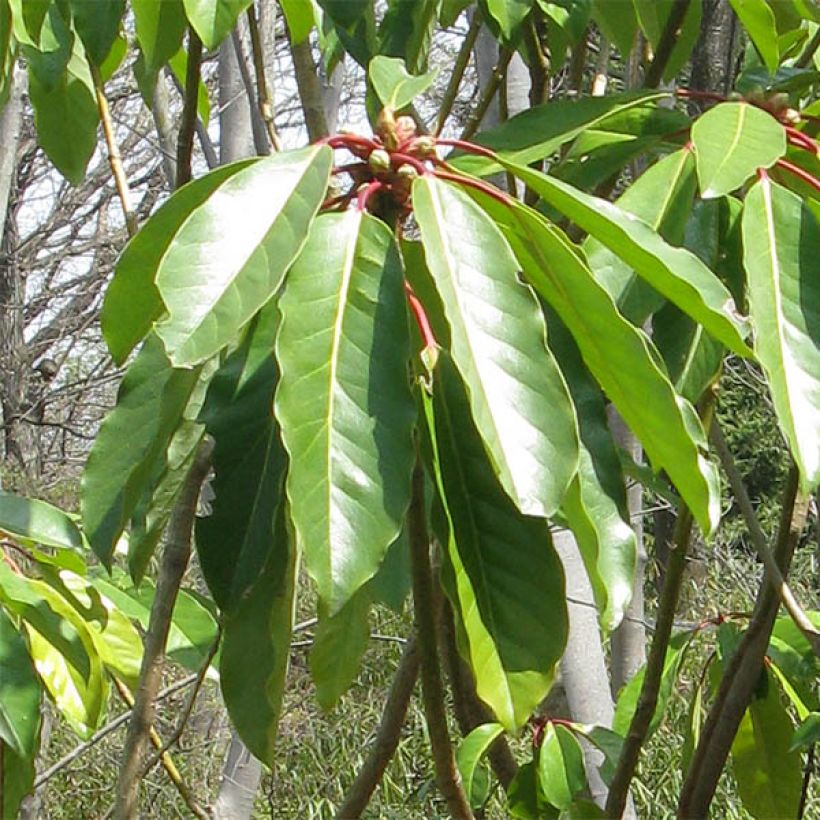



Plant habit
Flowering
Foliage
Botanical data
Daphniphyllum
himalayense subsp. macropodum
Daphniphyllaceae
China
Other Shrubs A to Z
Planting and care
Daphniphyllum himalayense macropodum thrives in partially shaded areas, sheltered from the scorching sun. Plant it in humus-bearing, rich, moist but well-drained, and slightly acidic soil. This bush is resistant to cold temperatures down to -18°C (-0.4 °F), but protect it from cold winter winds (the newly emerged shoots are susceptible to them). It does not require pruning, except to maintain a balanced shape.
Planting period
Intended location
Care
-
, onOrder confirmed
Reply from on Promesse de fleurs
Evergreen shrubs
Haven't found what you were looking for?
Hardiness is the lowest winter temperature a plant can endure without suffering serious damage or even dying. However, hardiness is affected by location (a sheltered area, such as a patio), protection (winter cover) and soil type (hardiness is improved by well-drained soil).

Photo Sharing Terms & Conditions
In order to encourage gardeners to interact and share their experiences, Promesse de fleurs offers various media enabling content to be uploaded onto its Site - in particular via the ‘Photo sharing’ module.
The User agrees to refrain from:
- Posting any content that is illegal, prejudicial, insulting, racist, inciteful to hatred, revisionist, contrary to public decency, that infringes on privacy or on the privacy rights of third parties, in particular the publicity rights of persons and goods, intellectual property rights, or the right to privacy.
- Submitting content on behalf of a third party;
- Impersonate the identity of a third party and/or publish any personal information about a third party;
In general, the User undertakes to refrain from any unethical behaviour.
All Content (in particular text, comments, files, images, photos, videos, creative works, etc.), which may be subject to property or intellectual property rights, image or other private rights, shall remain the property of the User, subject to the limited rights granted by the terms of the licence granted by Promesse de fleurs as stated below. Users are at liberty to publish or not to publish such Content on the Site, notably via the ‘Photo Sharing’ facility, and accept that this Content shall be made public and freely accessible, notably on the Internet.
Users further acknowledge, undertake to have ,and guarantee that they hold all necessary rights and permissions to publish such material on the Site, in particular with regard to the legislation in force pertaining to any privacy, property, intellectual property, image, or contractual rights, or rights of any other nature. By publishing such Content on the Site, Users acknowledge accepting full liability as publishers of the Content within the meaning of the law, and grant Promesse de fleurs, free of charge, an inclusive, worldwide licence for the said Content for the entire duration of its publication, including all reproduction, representation, up/downloading, displaying, performing, transmission, and storage rights.
Users also grant permission for their name to be linked to the Content and accept that this link may not always be made available.
By engaging in posting material, Users consent to their Content becoming automatically accessible on the Internet, in particular on other sites and/or blogs and/or web pages of the Promesse de fleurs site, including in particular social pages and the Promesse de fleurs catalogue.
Users may secure the removal of entrusted content free of charge by issuing a simple request via our contact form.
The flowering period indicated on our website applies to countries and regions located in USDA zone 8 (France, the United Kingdom, Ireland, the Netherlands, etc.)
It will vary according to where you live:
- In zones 9 to 10 (Italy, Spain, Greece, etc.), flowering will occur about 2 to 4 weeks earlier.
- In zones 6 to 7 (Germany, Poland, Slovenia, and lower mountainous regions), flowering will be delayed by 2 to 3 weeks.
- In zone 5 (Central Europe, Scandinavia), blooming will be delayed by 3 to 5 weeks.
In temperate climates, pruning of spring-flowering shrubs (forsythia, spireas, etc.) should be done just after flowering.
Pruning of summer-flowering shrubs (Indian Lilac, Perovskia, etc.) can be done in winter or spring.
In cold regions as well as with frost-sensitive plants, avoid pruning too early when severe frosts may still occur.
The planting period indicated on our website applies to countries and regions located in USDA zone 8 (France, United Kingdom, Ireland, Netherlands).
It will vary according to where you live:
- In Mediterranean zones (Marseille, Madrid, Milan, etc.), autumn and winter are the best planting periods.
- In continental zones (Strasbourg, Munich, Vienna, etc.), delay planting by 2 to 3 weeks in spring and bring it forward by 2 to 4 weeks in autumn.
- In mountainous regions (the Alps, Pyrenees, Carpathians, etc.), it is best to plant in late spring (May-June) or late summer (August-September).
The harvesting period indicated on our website applies to countries and regions in USDA zone 8 (France, England, Ireland, the Netherlands).
In colder areas (Scandinavia, Poland, Austria...) fruit and vegetable harvests are likely to be delayed by 3-4 weeks.
In warmer areas (Italy, Spain, Greece, etc.), harvesting will probably take place earlier, depending on weather conditions.
The sowing periods indicated on our website apply to countries and regions within USDA Zone 8 (France, UK, Ireland, Netherlands).
In colder areas (Scandinavia, Poland, Austria...), delay any outdoor sowing by 3-4 weeks, or sow under glass.
In warmer climes (Italy, Spain, Greece, etc.), bring outdoor sowing forward by a few weeks.



































